« A High-Volume Atmega Arduino Programmer and Tester | Main | New Freeduino Kits »
Build a MaxSerial Freeduino (April 9, 2008)
About
The MaxSerial is a MAX232 based serial board compatible with the Arduino environment.
Buy
I'm pleased to offer these as a kit, bare PCB, and fully assembled. Use the below options to purchase with-out the optional 3.3 volt supply or explore your other options.
| Full Kit | Board Only | Fully Assembled |
|---|---|---|
Use
Connect an adaptor with a centre-positive supply between 7 and 20 volts and connect the serial port. Your board now works like an including auto-reset. You will find the serial connection (especially during upload) to be more predictable and stable than the transistorized serial boards.
Build a USB7
Follow along to build your own MaxSerial Freeduino.
Tools
First, you'll need the following tools:
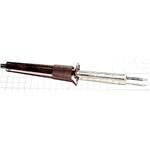 |
A soldering iron. Let's be honest, you know what the right iron for you is. |
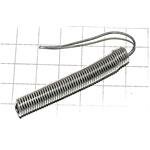 |
Some solder. I suggest .040 or lower diameter. The boards have a Pb-free finish and will work well with lead-free solder (although leaded solder works just as well). |
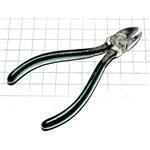 |
Side clippers. |
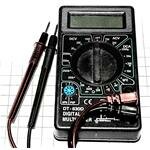 |
A multimeter. It doesn't need to be awesome, it should at-least measure voltage and continuity (with beep). Resistance will help as well. |
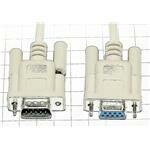 |
A male to female DB9 serial cable.You'll need this to connect the MaxSerial board to your computer. |
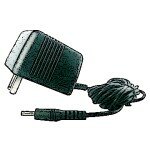 |
A power adaptor. You'll need one to power your MaxSerial. Positive-tip/center-positive, between 7 and 20 volts, about 2mm ID. |
Parts
Lets make sure you have all the parts.
| Description | Qty | Supplier | |
|---|---|---|---|
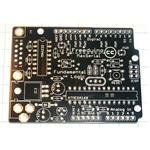 |
The MaxSerial PCB. This is the backbone of your MaxSerial | 1 | Fundamental Logic |
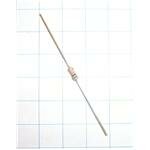 |
10KΩ Resistor. | 1 | Various |
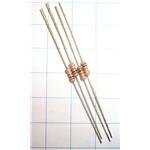 |
10KΩ Resistor. | 4 | Various |
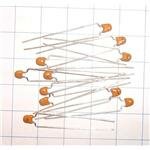 |
0.1µF ceramic capacitor. If you ordered the optional 3.3volt supply, you'll receive 11 capacitors instead of 10. | 10 | Futurlec C100UMC |
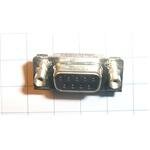 |
DB9 Right Angle Female Connector. | 1 | Futurlec DSUBPCF9 |
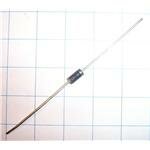 |
Diode. This is a generic diode used to protect against reverse polarity. The kit includes a 1N4004, but most diodes will work. | 1 | Various |
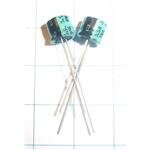 |
Electrolytic Capacitor. If you're going to use a shield, these have to be short and compact. | 2 | Fundamental Logic |
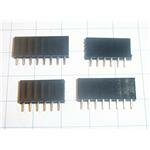 |
6pin Female Header | 2 | Futurlec FHEADS8 |
| 8pin Female Header | 2 | Futurlec FHEADS8 | |
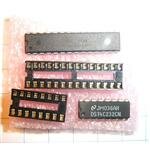 |
Atmega168 | 1 | Mouser 556-ATMEGA168-20PU |
| 28pin 0.300 DIP Socket | 1 | Futurlec ICS28N | |
| MAX232 or equivalent. Here we're using a DS14C232. | 1 | Mouser 595-MAX232NE4 | |
| 16pin DIP Socket | 1 | Futurlec ICS16 | |
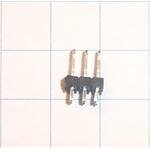 |
2x3 Header | 1 | Futurlec HEADD6 |
 |
LEDs in various colors | 2 | Fundamental Logic |
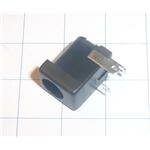 |
Power Connector ID:2mm OD:6.3mm. | 1 | Mouser 806-KLDX-0202-A |
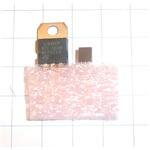 |
5 Volt regulator. The ubiquitous 7805 is used here, but there are other regulators with the same pinout and footprint. | 1 | Futurlec 7805T |
| 3.3 Volt Regulator (Optional). The 78L33 is a low drop out 3.3 volt regulator from the 78Lxx family. | 1 | Mouser 511-L78L33ACZ | |
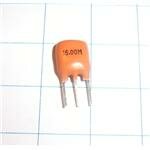 |
16MHz Ceramic Resonator. This is a 3-pin resonator with integrated capacitors. | 1 | Mouser 815-AWCR-16.00MD |
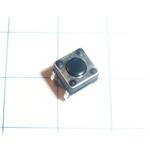 |
6mm Tactile Switch. | 1 | Futurlec TACT001 |
Assemble
Now that you have everything, lets assemble a MaxSerial board!
|
Install the 10KΩ resistor.
Bend the 10KΩ resistor's (Brown-Black-Orange-Gold) leads to almost right-angles. Insert the resistor into the location marked |
|
|
Install the 1K&Omega resistors.
Bend the 1KΩ resistors' leads and insert them into the four (4) remaining locations. |
|
|
Solder the resistors.
Solder all 5 resistors (10 leads). Clip their leads flush with the PCB. |
|
|
Install the diode.
Bend the diode's leads and insert it into it's holes. Make sure you align the line on the diode with the markings on the board. Solder the diode and clip it's leads. |
|
|
Install two sockets.
Install both the 28 and 16 pin sockets. Make sure you align the sockets' notches with the markings on the board. Solder all the leads. You don't need to clip these. |
|
|
Install the ceramic caps.
Install the ceramic caps into the marked locations. If you didn't order the 3.3volt supply, leave C8 empty. Solder and trim all the leads. |
|
|
Install the 5 volt regulator.
Bend the regulators leads back. Install the regulator. Make sure you get it face up and the right way round! Solder and clip the regulator's leads. |
|
|
Install the electrolytic capacitors.
Install the two electrolytic caps. Make sure the 'stripe' is down, or the long lead is up, or align the long lead with the '+' mark on the board. Solder the electrolytic caps and trim their leads. |
|
|
Install the reset switch.
Place the reset switch in it's location. It's wider one way then the other, if it doesn't fit, try rotating it 90°. Solder the switch. |
|
|
Install the 16MHz resonator.
Install the resonator. It will work in either direction, but the outside pins must be in the outside holes, and the inside pin must be in the center hole. If you have a crystal instead, go ahead and install it, but install the loading caps too! Solder the resonator and clip it's leads short. |
|
|
Install the LEDs
Install the two LEDs, you may put either LED in either location, but make sure the long lead is on the bottom. Solder and trim your LEDs' leads. |
|
|
Install the headers.
Install the headers. If you're kit came with a single block of headers, you'll need to cut them apart now, remember, you need to cut through a hole. Solder the headers. You may need to do some pre-solder wiggling to make them straight. |
|
|
Install the ICSP header.
Place the ICSP header. Solder the ICSP header. |
|
|
Install the power connector.
Place the power connector. Solder the power connector. You'll want to use lots of solder to keep the connector connection physically strong. |
|
|
Install the serial connector.
Place the serial connector. The lugs should snap into place and hold the connector momentarily. Solder the serial connector. Make sure you solder the lugs in place, these are the mechanical connection between the MaxSerial and the serial port. |
|
|
Install the ICs.
Install both ICs into their sockets. Make sure you align the notches on the ICs with the notches on the sockets and the board silkscreen. |
|
|
Install the 3.3 volt regulator. (Optional)
If you've ordered a 3.3 volt regulator, install the regulator and it's associated cap. Make sure you align the flat side of the regulator with the flat side of the board silkscreen. |
Download
- The schematic and board files.
- The
Arduino (6) Build (1) Eagle3D (3) Freeduino (6) Howto (9) Kit (11) MAX232 (2) MaxSerial (2) Serial (5)
Posted by spiffed at April 9, 2008 2:40 AM